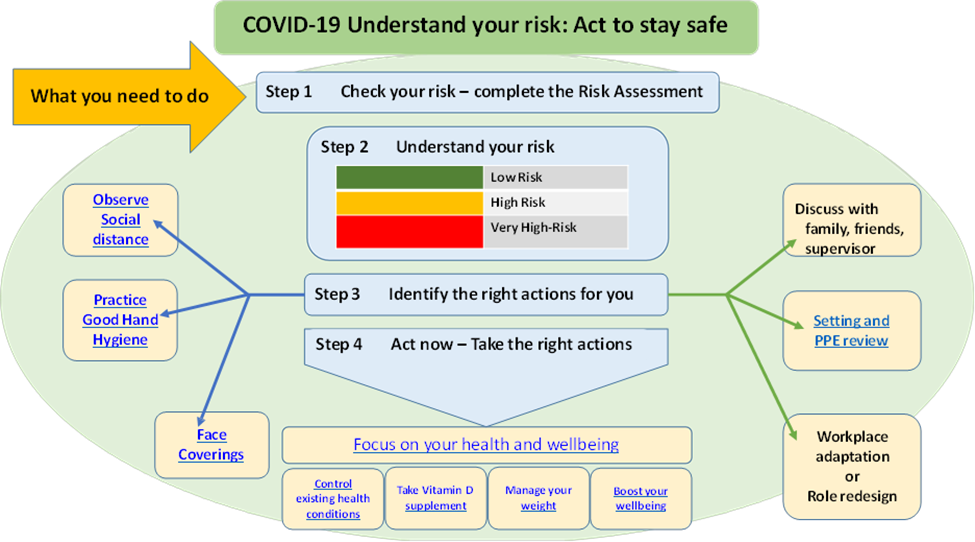Mitigating work-related stress: Mental and physical health have been prioritized in many workplaces recently, where they were previously ignored. With this rise in mental and physical employee health awareness, it is easy to overlook that employees’ workloads have grown exponentially, especially with the COVID pandemic. Organizations must be aware that if employees are expected to handle a more rigorous workload, the proper mental and physical health measures must be enacted within the workplace.
The COVID pandemic has amplified the need for employers to take care of their employees, not only so that operations are not disturbed but also to keep employees safe and healthy, thereby keeping them committed to both their own goals and the organization’s goals. This is particularly important for all security screeners.
Managing the cognitive workload in screeners’ responsibilities is a high priority for frontline security staff, as the sensory and perceptual load impact the screeners’ decision-making, vigilance, and attention, all of which are of the utmost importance when working within an airport checkpoint environment.
Employers with frontline security staff need to develop techniques to optimize various mental and physical attributes used in their workplace, including attention allocation, logical reasoning, pattern recognition and classification, visual search and visual memory strategies, and problem-solving. These should include physiological, behavioral, cognitive, and environmental assessments.
Aside from the common concerns that have arisen due to COVID and its evolving variants, additional consistent stressors affect the screener workforce. While the health risks from contracting COVID have lessened due to many factors, exposure to infection is still a concern due to transmission between themselves and passengers.
The Infection Prevention and Control (IPC) measures that were relied upon at the height of the pandemic comprised regulations for using Personal Protective Equipment (PPE), environmental adjustments, social distancing, adding physical barriers, training on IPC measures, signage, quarantining, testing, environmental cleaning, guidelines and recommendations from the federal government and the CDC. Masks are still being used for those who work in close contact with large numbers of people, and those additional measures have become part of the regular routine.
All security screeners are at a greater risk of infection and/or contaminating others because they are often face-to-face and close to many other individuals. This high-risk environment also creates great concern for the health and well-being of the screeners’ families outside of the workplace. Although the required PPE may be worn, security screeners and frontline security staff worry that they may carry COVID from the ongoing exposure they experience throughout their shift. Understanding that these job tasks must be conducted to ensure security, it is the employer’s responsibility to mitigate these stressors for the screeners.
In addition, staff reductions are still an issue today, a ripple effect from the many infection surges and societal changes brought on by the pandemic. Staff reductions and shortages may also increase stress on frontline security staff.
While each employee must monitor and recognize symptoms of stress, they can often be easily overlooked, with their attention focused on the mission. Because the job that screeners perform is integral to security, organizations can benefit when they prioritize the health and wellness of their employees and address these unexpected issues that arise.
Let’s look at how a streamlined process for identifying, documenting, and mitigating work-related stress can allow for fewer disruptions in daily security operations and a more present and healthy workforce.
Ongoing Impacts of COVID are Being Manifested in Screeners’ Overall Health
Research continues to assess the efficacy of IPC and, more importantly, how COVID impacts the workforce. Most studies assessed the effectiveness of IPC measures in hospital and nursing home settings, demonstrating the extent to which the COVID-19 pandemic has disproportionately impacted healthcare facilities and staff. However, few studies assessed IPC measures in manufacturing, industrial, essential retail, and public service settings, which have continued to provide essential goods and services to the public throughout the global pandemic.
Workers in these fields can suffer increased feelings of uncertainty, anxiety, irritation, anger, and denial. It is common to lack motivation, have trouble sleeping or concentrating, and feel tired, overwhelmed, burned out, sad, and even depressed, according to the Centers for Disease Control and Prevention.
A recent study, “Disparities in COVID-19-related stressful life events in the United States: Understanding who is most impacted,” was conducted to characterize stressful life events experienced as a result of the COVID-19 pandemic in five domains (i.e., work/finances, home life, social activity, health, and healthcare) and to examine the extent to which sociodemographic factors (i.e., gender, race/ethnic minority status, SES, and wealth) account for disparities in these outcomes.
According to the study, women experienced a higher number of COVID-19–related stressful life events across work/finances, home life, social activity, and access to healthcare.
There were also negative effects on workers with a lower socioeconomic status. Compared to those with a higher annual salary, those with lower-than-average annual salaries reported problems such as increased social problems with friends and family and increased symptoms of depression and anxiety, with such changes possibly driven or intensified by income insecurity.
Identifying, Documenting, and Addressing the Concern of Security Screeners
To fully understand the specific and most prominent stressors for screeners, it is imperative to determine if they understand the signs of stress. Organizations must educate screeners on being able to identify symptoms of prolonged stress and how these may make their job more difficult.
This can be achieved with the following checklist:
● Conduct a short baseline survey
● Conduct either virtual or in-person focus groups
● Conduct General Anxiety Disorder-7 (GAD) Assessment
● Assess all data to create mitigation solutions
Address
Once these behaviors have been identified and documented, it is crucial to normalize and validate those behaviors identified by the screeners.
This includes teaching them to recognize symptoms of stress they may be experiencing, according to the Centers for Disease Control and Prevention, such as:
● Feeling irritation, anger, or being in denial about these feelings
● Feeling uncertain, nervous, or anxious
● Lacking motivation
● Feeling tired, overwhelmed, or burned out
● Feeling sad or depressed
● Having trouble sleeping
● Having trouble concentrating
The screeners must then be taught to understand the precursors of stress to develop personal intervention strategies. Employers of security screeners should develop communications via video in coordination with their training department and their top leaders to present to the entire workforce over time. They should also provide education on the consequences of prolonged periods of stress.
Finding the right communication strategy that instills a sense of understanding and compassion, and shows that the screeners are appreciated and valued, are investments in helping security screeners get through these uncertain times.
Three Safety and Security Recommendations
1. Investment is Profound as Screeners are Integral in Maintaining Safety and Security
Investment in resources supporting the health and well-being of security screeners is vital to national security, public safety, and security at several organizations. Organizations must acknowledge this, and employees must know that their managers and department heads seriously consider their concerns regarding both pandemic-related and general stress. They need to know and be recognized for how valuable they are.
Organizations and security teams can provide education on the consequences of prolonged stress and provide ways for employees to acknowledge when they are experiencing this. They need to be able to answer the question, “How do I know I’m experiencing these symptoms?”
2. Fostering Productivity
Productivity is correlated with an increased sense of meaning and also relates to the mission. Organizations and their security teams should develop and disseminate effective communications with key messages emphasizing the importance of the screeners to the mission.
Additional measures include interactive sessions with employee participation to encourage collaboration, which can help address why they are experiencing stress or lack of motivation. These feelings are valid, and the organization must care about them and want to identify why they feel negative so they can work to make their feelings more positive.
Modules for recognizing and acknowledging stress and anxiety in the workplace can include screener participation for a more relatable approach. With more positive feelings in the workplace come higher levels of productivity.
3. Establishing a Framework for Mitigation
Due to the number of frontline security staff and screeners employed by the security industry, the head of organizations can’t address every employee issue. However, by delegating this responsibility to the various managers, the opportunity for employees to voice their concerns and meaningfully engage with mitigation tactics greatly increases. Organizations and their security teams can create a script for managers to follow to streamline this process and anticipate common responses.
With the collaboration of each moving part of the security workforce, working conditions and employee considerations can improve to foster a more productive team across many different departments. A streamlined process for identifying, documenting, and mitigating work-related stress exacerbated by the global pandemic will allow for fewer disruptions in daily operations and a more present and healthy workforce.
Author – Bonnie Kudrick






